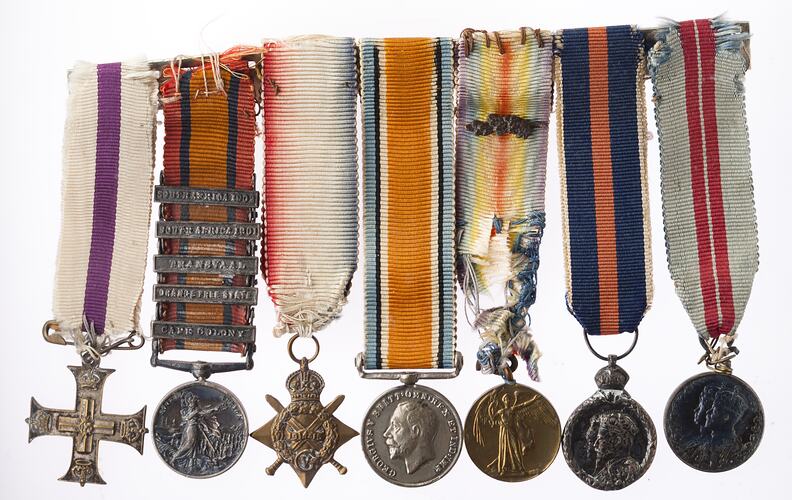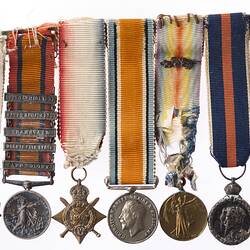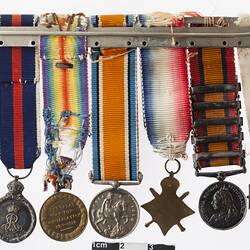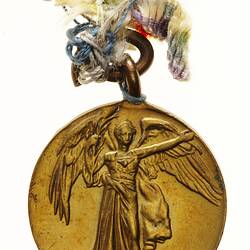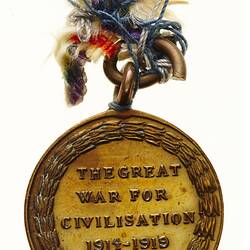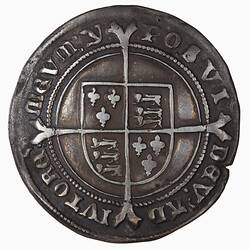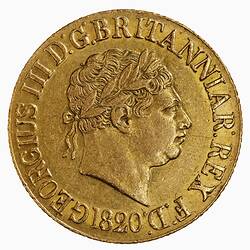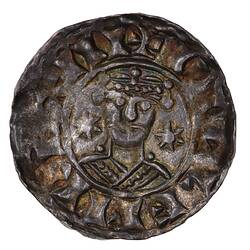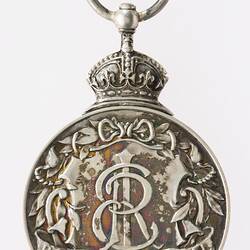Summary
Victory Medal 1914-1919 (Miniature), part of medal group (Miniatures) Boer War and World War I awarded to Revd. Ormonde Winstanley Birch.
It is the third medal from the right. The medals are: Military Medal, Queen's South Africa; 1914 -15 Star; British War Medal; Victory Medal with mention in dispatched wreath; Edward VII Coronation; George V Dehli Durbar, 1911.
The Victory Medal was authorised in 1919 and was awarded to army, navy and air force personnel who served in a theatre of war between midnight 4th-5th August 1914 and midnight 11th-12th November 1918. The Allies resolved that, if they wished to issue a Victory Medal, it would share a common feature of a depiction of Victory on the obverse and a ribbon of red, yellow, green, blue and violet merged into a rainbow pattern. This medal, that of Great Britain, was awarded to personnel from countries in the British Empire (some 5,725,000 were issued). The other Allied countries that issued Victory medals were: Belgium, Brazil, Cuba, Czechoslovakia, France, Greece, Italy, Japan, Portugal, Romania, Thailand, Union of South Africa and the United States of America.
Physical Description
A bronze medal with ring mount for ribbon. The obverse features a figure of Victory facing three-quarters right with wings spread; in her right hand she holds a palm branch, her left hand is extended and open. The artist's initials, W.McM. (W. McMillan) are above the ground line on the right. The reverse has the words, THE GREAT . WAR FOR . CIVILISATION 1914 - 1919 within a circular wreath of laurel. The edge is plain.
Obverse Description
A figure of Victory facing three-quarters right with wings spread; in her right hand she holds a palm branch, her left hand is extended and open. The artist's initials, W.McM. (W. McMillan) are above the ground line on the right.
Reverse Description
The words, THE GREAT . WAR FOR . CIVILISATION 1914 - 1919 within a circular wreath of laurel.
More Information
-
Collecting Areas
-
Acquisition Information
Donation from Mrs O. W. Birch, Apr 1971
-
Mint
-
Artist
-
Awarded To
-
Place
-
Inscriptions
W.McM. (W. McMillan) THE GREAT . WAR FOR . CIVILISATION 1914 - 1919
-
Material
Bronze
-
Axis
12
-
Classification
-
Category
-
Discipline
-
Type of item
-
Shape
Round with loop and ribbon
-
References
References: National Archives, UK website: [Link 1]
[Book] Joslin, E C., et al. 1988. British Battles and Medals., 230 - 1 Pages
-
Keywords
